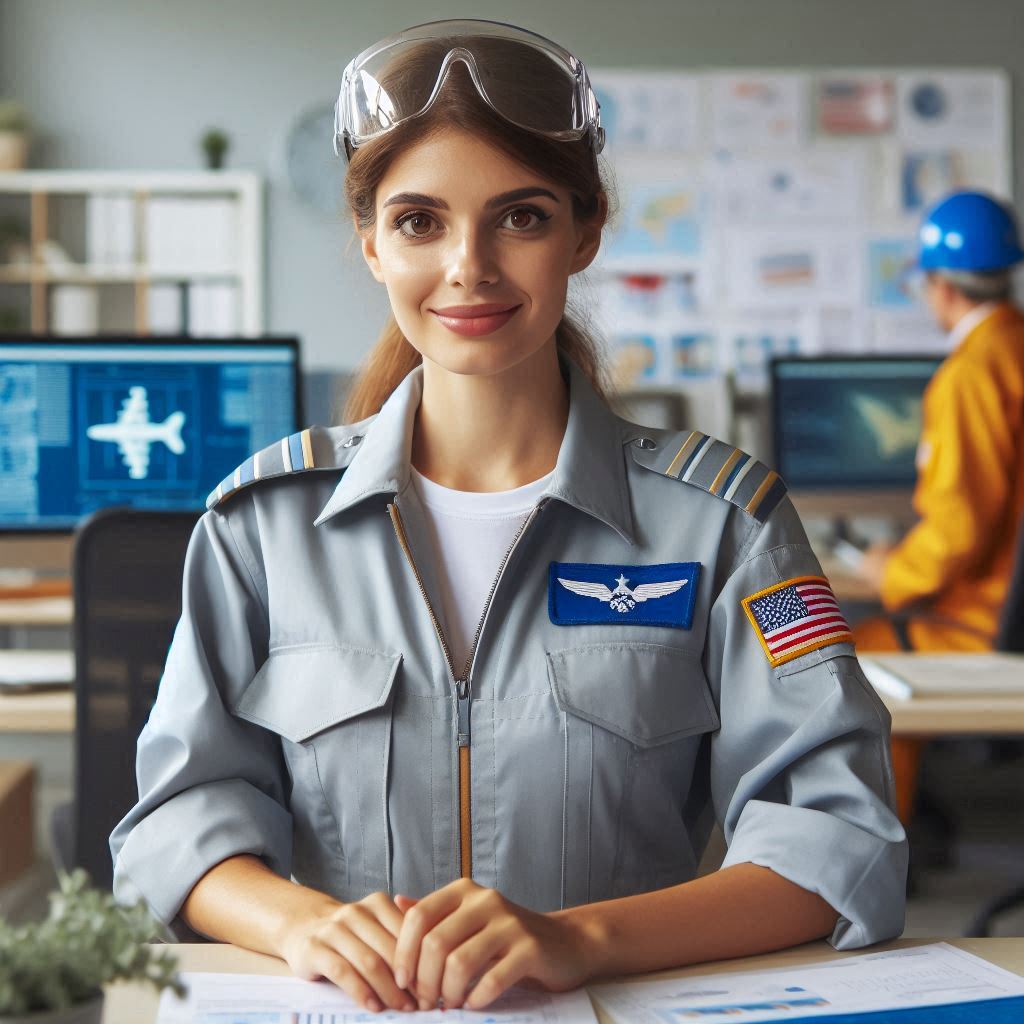Introduction
Aerospace engineering has undergone remarkable transformations over the decades.
Significantly influencing technological advancements and shaping the modern world.
This field’s origins can be traced back to the early 20th century, with pioneers like the Wright brothers achieving the first powered flight in 1903.
This milestone marked the beginning of a new era in transportation and technology.
As aerospace engineering evolved, it played a critical role in the development of military and commercial aviation.
Pushing the boundaries of speed, altitude, and safety.
In the mid-20th century, aerospace engineering reached new heights with the advent of space exploration.
The successful launch of Sputnik in 1957 and the Apollo moon landings in 1969 showcased the extraordinary capabilities of this field
Propelling humanity into a new era of exploration and discovery.
These achievements not only expanded our understanding of space but also led to innovations in materials science, propulsion systems, and electronics.
Today, aerospace engineering continues to be at the forefront of technological innovation.
It plays a vital role in developing advanced satellite systems, space tourism initiatives, and efforts to create more sustainable and efficient aircraft.
This ongoing evolution highlights the field’s importance in addressing global challenges and exploring new frontiers.
This blog post will delve into the historical development of aerospace engineering, its contributions to technology, and its future prospects.
Early Beginnings of Aerospace Engineering
Origins of Aerospace Engineering in the Late 19th Century
Aerospace engineering began in the late 19th century with the quest for powered flight.
Innovators and visionaries explored ways to achieve human flight, laying the groundwork for this field.
Their efforts combined theoretical knowledge and practical experimentation, setting the stage for future advancements.
The concept of heavier-than-air flight, a radical idea at the time, was at the heart of these early endeavors.
Engineers and inventors faced numerous challenges, including understanding aerodynamics, propulsion, and structural integrity.
These foundational challenges spurred significant research and innovation.
Contributions of Pioneers Like Samuel Pierpont Langley and Orville and Wilbur Wright
Samuel Pierpont Langley, a key figure in early aviation, made significant contributions to aerospace engineering.
As Secretary of the Smithsonian Institution, Langley conducted extensive research on aerodynamics.
His work included developing the “Langley Aerodrome,” an early powered aircraft prototype.
Langley’s experiments, although ultimately unsuccessful in achieving sustained flight, provided valuable insights into aircraft design.
His attempts underscored the importance of balancing weight, lift, and thrust in flight mechanics.
Langley’s efforts were part of a broader scientific and engineering push toward powered flight.
Orville and Wilbur Wright, often credited with inventing the first successful airplane, were pivotal in aerospace history.
In 1903, they achieved controlled, sustained flight with their aircraft, the Wright Flyer.
This milestone was a culmination of their work on wing design, propulsion, and control systems.
The Wright brothers’ approach combined practical experimentation with a systematic understanding of aerodynamics.
They developed a three-axis control system, which allowed the pilot to steer the aircraft effectively.
This innovation was crucial in transitioning from gliders to powered flight.
Early Developments in Aircraft Design and Propulsion
Early developments in aircraft design focused on achieving a balance between lift, weight, thrust, and drag.
Pioneers experimented with various wing shapes, materials, and propulsion methods.
The transition from wood and fabric structures to metal aircraft marked significant progress in design and durability.
Propulsion systems evolved from simple engines to more complex and powerful ones.
The Wright brothers used a lightweight, gasoline-powered engine for the Wright Flyer.
This innovation demonstrated the viability of internal combustion engines for powered flight.
In the years following the Wright brothers’ success, aircraft designs became more sophisticated.
Biplanes and triplanes gave way to monoplanes, offering better aerodynamics and efficiency.
The introduction of radial and inline engines provided more reliable and powerful propulsion.
The evolution of aerospace engineering began with the pioneering work of innovators in the late 19th and early 20th centuries.
Figures like Samuel Pierpont Langley and the Wright brothers made significant contributions, laying the foundation for modern flight.
Early developments in aircraft design and propulsion set the stage for the rapid advancements that followed.
These early efforts established critical principles of flight and engineering that continue to influence the field today.
The legacy of these pioneers is evident in the sophisticated aircraft and aerospace technologies that define modern aviation.
World War I and II Impact on Aerospace Engineering
The role of aerospace engineering in military aviation during both wars was crucial.
Engineers played a key part in the development of aircraft designed for combat, reconnaissance, and transport purposes.
Role of Aerospace Engineering in Military Aviation During Both Wars
Aerospace engineering played a crucial role in military aviation during World War I and World War II. In World War I.
Engineers developed more advanced aircraft designs, including biplanes with improved speed and maneuverability.
These innovations were pivotal in reconnaissance missions and air combat.
During World War II, the demand for superior aircraft technology accelerated aerospace engineering advancements.
Engineers focused on creating faster, more efficient fighter planes and bombers.
Innovations such as all-metal aircraft structures and retractable landing gear became standard.
Aerospace engineers also contributed to the development of long-range bombers, crucial for strategic bombing campaigns.
These advancements significantly impacted the war’s outcome, highlighting the importance of aerospace engineering in military strategy.
Technological Advancements Such as Radar and Jet Engines
The introduction of radar and jet engines marked significant milestones in aerospace engineering.
Radar technology, developed during World War II, revolutionized air navigation and combat.
It enabled early detection of enemy aircraft, significantly improving defensive capabilities.
Jet engines, another critical advancement, transformed aircraft performance.
The first operational jet-powered aircraft flew during the final years of World War II.
Jet engines offered greater speed and efficiency compared to traditional piston engines, leading to the development of modern jet aircraft.
These technological advancements laid the foundation for the post-war aerospace industry.
They enabled the creation of faster and more reliable commercial aircraft, revolutionizing global travel and military aviation.
Establishment of Aerospace Engineering as a Distinct Field of Study
Aerospace engineering emerged as a distinct field of study in the mid-20th century.
The rapid advancements in aircraft and spacecraft technologies necessitated specialized education and training.
Universities began offering dedicated programs in aerospace engineering, focusing on aerodynamics, propulsion, and structural design.
The space race between the United States and the Soviet Union further propelled the growth of aerospace engineering.
The launch of Sputnik in 1957 and the Apollo moon landings underscored the importance of this field.
Aerospace engineers were at the forefront of designing spacecraft and launch vehicles, contributing to significant achievements in space exploration.
Aerospace engineering programs evolved to include both aeronautical and astronautical engineering, covering aircraft and spacecraft systems.
This expansion reflected the growing complexity and scope of aerospace technologies.
The field’s academic and professional standards became more defined, solidifying its status as a critical area of engineering.
The evolution of aerospace engineering over the decades has been marked by significant contributions to military aviation.
Technological advancements, and the establishment of specialized education.
From the development of advanced aircraft during the world wars to the introduction of radar and jet engines.
Aerospace engineering has continually pushed the boundaries of technology.
The emergence of aerospace engineering as a distinct academic and professional field reflects the increasing complexity and importance of this discipline.
As technology continues to evolve, aerospace engineers will remain at the forefront of innovation, driving progress in aviation and space exploration.
Read: How to Become a Civil Rights Advocate
Cold War and Space Race
Launch of Sputnik by the Soviet Union in 1957
The launch of Sputnik by the Soviet Union in 1957 marked a pivotal moment in aerospace engineering history.
Sputnik, the first artificial satellite, demonstrated the capability to send objects into orbit.
This achievement initiated the space race and highlighted the Soviet Union’s advancements in rocket technology.
The success of Sputnik accelerated interest in space exploration and spurred global competition.
It showcased the potential for satellite communication, earth observation, and scientific research from space.
Sputnik’s launch also underscored the strategic importance of space technology in national security and global prestige.
The engineering behind Sputnik involved advances in rocketry, propulsion systems, and satellite design.
These innovations laid the groundwork for future space missions and set the stage for rapid developments in aerospace technology.
United States’ Response with NASA and the Apollo Program
In response to Sputnik, the United States established NASA in 1958.
NASA’s creation aimed to coordinate and accelerate American space exploration efforts.
The United States launched the Apollo program, an ambitious effort to land humans on the Moon and return them safely to Earth.
The Apollo program represented a monumental leap in aerospace engineering.
It required developing new technologies, including the Saturn V rocket, the lunar module, and advanced life support systems.
The successful Apollo 11 mission in 1969 achieved the first human moon landing, a significant milestone in human history.
NASA’s efforts in the Apollo program extended beyond lunar exploration.
The program fostered advancements in materials science, computing, and telecommunications.
It also inspired a generation of engineers and scientists, shaping the future of aerospace research and exploration.
Development of Rockets and Space Shuttles
The space race catalyzed the development of powerful rockets and the Space Shuttle program.
Rockets like the Saturn V, used in the Apollo missions, demonstrated the capability to deliver large payloads into space.
The engineering challenges included managing massive thrust, ensuring structural integrity, and developing guidance systems.
Post-Apollo, NASA shifted focus to reusable spacecraft with the Space Shuttle program.
The Space Shuttle, first launched in 1981, was designed to be reusable, reducing the cost of access to space.
This program emphasized advancements in thermal protection systems, orbital maneuvering, and payload delivery.
The Space Shuttle program facilitated the construction of the International Space Station (ISS), furthering international collaboration in space.
It also expanded the scope of human activities in space, including satellite deployment, scientific experiments, and maintenance of orbital equipment.
The evolution of aerospace engineering over the decades has been profoundly influenced by milestones such as the launch of Sputnik.
The Apollo program, and the development of rockets and space shuttles.
These achievements not only marked technological advancements but also demonstrated the strategic and exploratory potential of space.
The establishment of NASA and the successes of the Apollo program showcased the power of coordinated scientific and engineering efforts.
The development of rockets and space shuttles paved the way for ongoing exploration and research in space.
As aerospace engineering continues to evolve, these foundational achievements will inspire and guide future innovations in space exploration and technology.
Read: The Intersection: Architecture & Tech in Modern USA.
Transform Your Career Today
Unlock a personalized career strategy that drives real results. Get tailored advice and a roadmap designed just for you.
Start NowModern-Day Aerospace Engineering
As we look at aerospace engineering in the current era, we can see a significant shift towards innovation and technological advancements.
Here are some key aspects that define modern-day aerospace engineering:
Innovations in Materials Like Carbon Fiber and Composite Materials
Aerospace engineering has seen significant advancements in materials technology, particularly with the introduction of carbon fiber and composite materials.
These materials offer a high strength-to-weight ratio, which is crucial for improving aircraft performance and fuel efficiency.
The use of carbon fiber composites in aircraft structures has become standard, reducing weight and allowing for more aerodynamic designs.
Composite materials have also enhanced durability and resistance to environmental factors.
These materials can withstand extreme temperatures and stress, making them ideal for aerospace applications.
The transition to composites has enabled engineers to design lighter, stronger, and more efficient aircraft, revolutionizing the industry.
Advancements in Aerodynamics and Propulsion Systems
Aerodynamics and propulsion systems have evolved significantly, driven by the need for faster, more efficient, and safer aircraft.
Engineers have developed advanced wing designs, such as winglets, to reduce drag and improve fuel efficiency.
Computational fluid dynamics (CFD) has become a vital tool in designing aerodynamic shapes, allowing for precise simulations and optimizations.
Propulsion systems have also seen remarkable advancements.
The development of turbofan engines, which offer better fuel efficiency and quieter operation, has been a significant leap.
Research into alternative propulsion technologies, such as electric and hybrid engines, is ongoing, aiming to reduce reliance on fossil fuels and lower emissions.
The introduction of variable cycle engines and other advanced propulsion technologies has enabled aircraft to perform efficiently across a wider range of speeds and altitudes.
These innovations contribute to both civilian and military aviation, enhancing overall performance and operational capabilities.
Focus on Environmentally-Friendly and Sustainable Aircraft Design
In recent decades, the aerospace industry has increasingly focused on environmentally-friendly and sustainable aircraft design.
This shift is driven by the need to reduce carbon emissions and minimize the environmental impact of aviation.
Engineers are exploring new technologies and materials to create greener aircraft.
One area of focus is the development of sustainable aviation fuels (SAFs) that produce fewer carbon emissions compared to traditional jet fuels.
The integration of SAFs into existing aircraft systems is a critical step towards reducing the aviation industry’s carbon footprint.
Another significant trend is the push towards electric and hybrid-electric aircraft.
These technologies promise to reduce greenhouse gas emissions and noise pollution, making air travel more sustainable.
The development of lightweight materials, such as advanced composites, also plays a crucial role in this effort by reducing the overall energy consumption of aircraft.
The evolution of aerospace engineering has been marked by innovations in materials, aerodynamics, and propulsion systems.
The introduction of carbon fiber and composite materials has revolutionized aircraft design, enhancing strength and efficiency.
Advancements in aerodynamics and propulsion systems have led to more efficient and capable aircraft.
The industry’s focus on environmentally-friendly and sustainable aircraft design is crucial for the future of aviation.
By embracing new technologies and materials, aerospace engineers are paving the way for a more sustainable and efficient aviation industry.
These advancements ensure that aerospace engineering continues to evolve, meeting the challenges of modern aviation.
Read: Economic Indicators and Their Influence on US Architects

Find Out More: Mining Engineer vs. Geological Engineer: Key Differences
Future Trends in Aerospace Engineering
Autonomous and Unmanned Aerial Vehicles
Aerospace engineering has seen a significant shift towards autonomous and unmanned aerial vehicles (UAVs).
The development of drones and autonomous aircraft has transformed various sectors, from military operations to commercial applications.
UAVs offer enhanced surveillance capabilities, precision strikes, and reduced human risk in hazardous environments.
Engineers focus on advancing UAV technologies to improve flight control, navigation, and data collection.
Autonomous systems use sophisticated algorithms to operate without direct human intervention.
This progress is driven by the need for efficiency, safety, and cost-effectiveness in aerial operations.
Research in autonomous systems includes developing robust communication links and reliable navigation systems.
These advancements enable UAVs to perform complex missions, such as environmental monitoring and search-and-rescue operations, with greater precision and reliability.
Research in Hypersonic Flight and Space Tourism
Hypersonic flight is another exciting area of research in aerospace engineering.
Hypersonic vehicles travel at speeds greater than Mach 5, or five times the speed of sound.
This technology promises revolutionary changes in both military and civilian aerospace applications, including faster travel and advanced defense systems.
Engineers and researchers are tackling numerous challenges in hypersonic flight.
These include managing extreme temperatures, developing advanced materials, and achieving stable propulsion.
Successful hypersonic flight could lead to significant reductions in travel time and new capabilities in space exploration.
Space tourism is also gaining momentum, with significant advancements in spacecraft design and technology.
Companies are investing in developing suborbital and orbital space tourism experiences.
Aerospace engineers are working on creating safe, reliable, and cost-effective spacecraft to make space travel accessible to civilians.
Integration of Artificial Intelligence and Machine Learning in Aircraft Design
The integration of artificial intelligence (AI) and machine learning in aircraft design represents a major leap forward.
AI and machine learning enhance aircraft performance, efficiency, and safety.
These technologies enable aircraft to adapt to changing conditions and optimize flight paths in real-time.
AI is used to analyze vast amounts of data from aircraft sensors, providing insights into performance and maintenance needs.
Machine learning algorithms can predict potential issues before they arise, improving reliability and reducing downtime.
Designers also use AI to streamline the design process, optimizing aircraft structures and systems.
AI algorithms can simulate and analyze numerous design variations, leading to more innovative and efficient aircraft designs.
This integration of technology helps push the boundaries of what is possible in aerospace engineering.
The evolution of aerospace engineering has entered an exciting phase with a focus on autonomous systems, hypersonic flight, and AI integration.
Autonomous and unmanned aerial vehicles are revolutionizing various industries with their advanced capabilities.
Research in hypersonic flight and space tourism promises to reshape travel and exploration.
The incorporation of AI and machine learning into aircraft design enhances performance and efficiency.
These advancements reflect the dynamic and innovative nature of aerospace engineering.
As technology continues to progress, aerospace engineers will drive the future of aviation and space exploration, bringing new possibilities and opportunities to the forefront.
Read: Post-Pandemic Design Trends: US Architects Adapt
Role of Aerospace Engineering in Global Economy
One of the key factors in the evolution of aerospace engineering over the decades has been its role in the global economy.
Impact of Aerospace Industry on Economic Growth and Job Creation
The aerospace industry has been a significant driver of economic growth in many countries.
As the industry continues to innovate and develop new technologies, it creates jobs and stimulates economic activity.
Aerospace companies invest heavily in research and development, which leads to the creation of high-skilled, well-paying jobs.
Additionally, the aerospace industry has a multiplier effect on the economy.
It not only directly employs engineers, scientists, and technicians but also supports a vast network of suppliers, service providers, and other businesses.
This creates a ripple effect that boosts economic growth and creates indirect job opportunities.
Contribution to National Defense and Security
Aerospace engineering plays a crucial role in national defense and security.
The development of advanced aircraft, missiles, satellites, and other aerospace technologies is essential for protecting a country’s interests and ensuring its security.
Aerospace engineers work closely with defense organizations to design and build cutting-edge defense systems that safeguard the nation.
The aerospace industry also contributes to national security by fostering innovation and technological advancement.
By continuously pushing the boundaries of aerospace engineering, countries can stay ahead of potential threats and maintain their defense capabilities.
This not only enhances national security but also bolsters the defense industry’s competitiveness and resilience.
Collaboration Among Countries in Space Exploration and Research
The field of aerospace engineering has facilitated international collaboration in space exploration and research.
Countries around the world have come together to pool resources, expertise, and technological capabilities to explore space and conduct scientific experiments.
This collaboration has led to groundbreaking discoveries, advancements in space technology, and a deeper understanding of the universe.
International cooperation in space exploration has also helped build diplomatic relations and foster goodwill among nations.
By working together on ambitious space missions, countries can overcome political differences and promote peace and cooperation.
This has enabled countries to achieve feats in space exploration that would not have been possible otherwise.
Essentially, the role of aerospace engineering in the global economy is multifaceted and far-reaching.
From driving economic growth and job creation to ensuring national defense and security, aerospace engineering plays a critical role in shaping the world we live in.
Additionally, through collaboration among countries in space exploration and research.
Aerospace engineering has helped expand human knowledge and push the boundaries of what is possible in the exploration of space.
Conclusion
The evolution of aerospace engineering over the decades has been nothing short of remarkable.
From the early days of experimenting with gliders to the modern era of designing advanced spacecraft, the field has come a long way.
Continuous innovation and research have played a significant role in shaping the future of aerospace engineering.
The introduction of new materials, propulsion systems, and technology has revolutionized the way we explore space.
As we look ahead, it is clear that the need for ongoing research and development will be crucial in driving further advancements in aerospace engineering.
The challenges of space exploration require a constant push towards new ideas and technologies.
By building upon the foundation laid by the pioneers of aerospace engineering and embracing the spirit of innovation.
We can continue to expand our understanding of the universe and push the boundaries of what is possible in space exploration.
Ultimately, aerospace engineering stands at the forefront of human ingenuity and exploration.
It serves as a testament to our curiosity and ambition to reach beyond the confines of Earth.
With each new breakthrough, we inch closer to unlocking the mysteries of the cosmos.
[E-Books for Sale]
The Big Book of 500 High-Paying Jobs in America: Unlock Your Earning Potential
$19.99 • 500 High-Paying Jobs • 330 pages
Explore 500 high-paying jobs in America and learn how to boost your career, earn more, and achieve success!
See All 500 High-Paying Jobs of this E-Book
1001 Professions Without a Degree: High-Paying American Jobs You Can Start Now
$19.99 • 1001 Professions Without a Degree • 174 pages
Discover 1001 high-paying jobs without a degree! Unlock career tips, skills, and success strategies for just $19.99!




